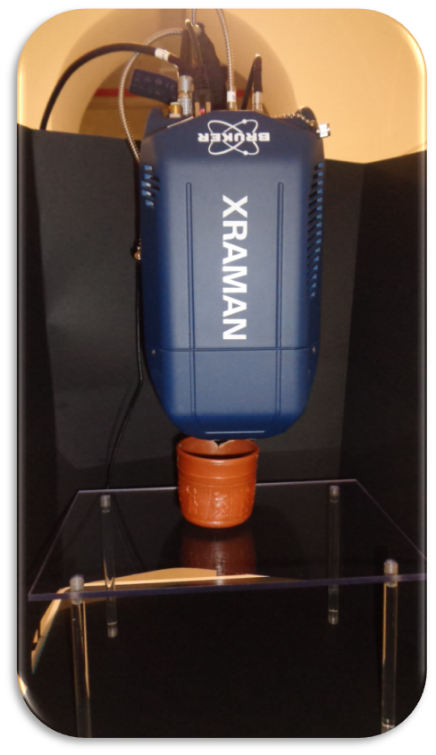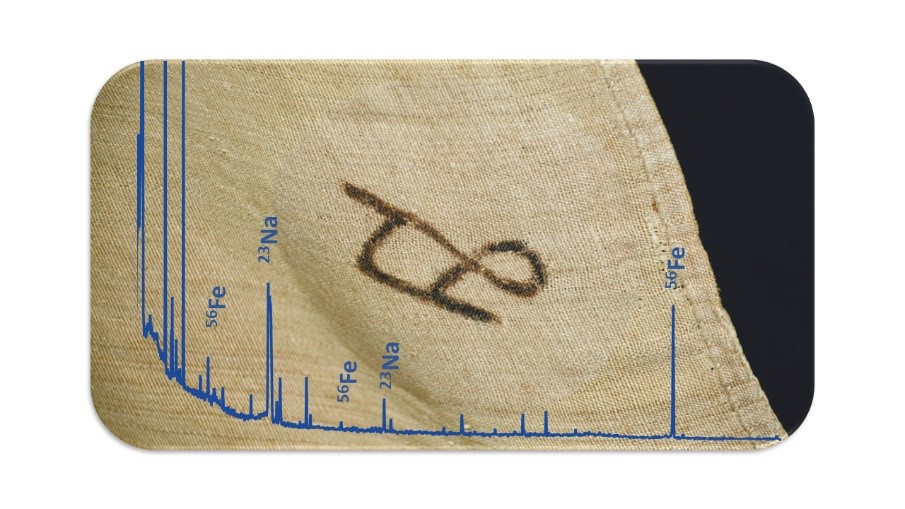| XRAMAN is an innovative portable spectrometer designed to perform in-situ, fast and non-destructive combined elemental and molecular analyses, by the complementary EDXRF and RAMAN techniques. The XRF system is fully integrated into the compact detection head equipped with a large area fast Silicon Drift Detector. The RAMAN system is composed by a detection probe integrated in the detection head and an external unit with a high performance CCD spectrometer and a stabilized laser. |

Name of the contact point: Giulia Festa Name of the laboratory: Physics for Cultural Heritage at CREF

XRF: X-ray fluorescence (XRF) is used for non-destructive testing for elemental characterization. The incident X-Rays are used to produce the secondary (or fluorescent) X-rays from a material that are collected by the detector. The phenomenon is widely used for elemental and chemical analysis, particularly in the investigation of metals, glass, ceramics, stones etc RAMAN: Raman spectroscopy is typically used to determine vibrational modes of molecules. The technique is commonly used to provide a structural fingerprint by which molecules can be identified. A combination of X-Ray fluorescence spectroscopy and Raman spectroscopy
USE FOR – investigations on a large kind of materials including metals, ceramics, glass, etc
EDXRF
Large area Silicon Drift X-ray Detector (SDD): active area 25mm2, energy resolution <140eV measured on MnKa line (5.890eV) with input photon rate up to 100.000 counts per second. Excitation source: transmission X-Ray generator, 5-200μA, 10 – 50 kV, Rh anode, max 8W.
Thermo-Electric Cooled Fiber Optic spectrometer: 2048 pixel (14um x 200um) 3-stage TE cooled and regulated CCD detector. Raman analysis range
120-3650cm-1. Resolution typ 5-6cm-1.
Excitation Laser: 785 nm
SAMPLE – any shape and size
Case Studies
The development of black inks has allowed writing to become a consolidated method of communication in history. Inks used in Egypt in the 15th century BC were studied here. Through the combination of noninvasive techniques, including ultraviolet (UV) reflected imaging, near-infrared reflectography (NIRR), X-ray fluorescence spectroscopy (XRF), Raman spectroscopy, and immediate gamma-activated analysis (PGAA), the recipe of the ancient inks is now unveiled.G. Festa et al, Egyptian metallic inks on textiles from the 15th century BCE unravelled by light and neutron probes. Scientific Reports, 9, 7310 (2019)

